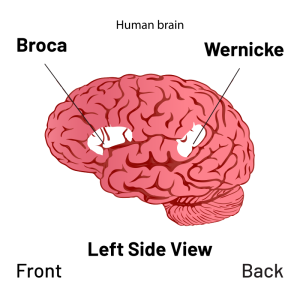What is a Brain Stroke?
A brain stroke occurs when the blood supply to a part of the brain is disrupted, either due to a blockage (ischemic stroke) or a rupture of a blood vessel (hemorrhagic stroke). This interruption deprives brain cells of oxygen, leading to cell damage or death. The severity of the stroke depends on the duration of the blockage and the affected brain region.
Types of Brain Stroke
There are two primary types of brain stroke:
1. Ischemic Stroke
This is the most common type, accounting for approximately 87% of all strokes. It occurs when a blood clot blocks or narrows an artery supplying blood to the brain. Causes include:
- Atherosclerosis: Hardening and narrowing of arteries due to plaque buildup.
- Embolism: A clot that forms elsewhere in the body and travels to the brain.
- Thrombosis: A clot that forms directly in a cerebral artery.
2. Hemorrhagic Stroke
This occurs when a blood vessel in the brain bursts, causing bleeding into surrounding tissues. Common causes include:
- High blood pressure (hypertension)
- Aneurysms: Weak or ballooned arteries that rupture.
- Trauma or blood vessel malformations.

Which Brain Stroke is the Most Dangerous?
Both types of strokes can be life-threatening, but hemorrhagic strokes are generally considered more dangerous due to rapid and severe brain damage. The two primary types include:
- Intracerebral Hemorrhage: Bleeding directly into the brain tissue.
- Subarachnoid Hemorrhage: Bleeding between the brain and the thin tissues covering it, usually due to a ruptured aneurysm.
Hemorrhagic strokes have a higher fatality rate and a greater risk of complications.
Which Side of the Brain Stroke Affects Speech?
The left hemisphere of the brain controls language and speech. Therefore, a stroke affecting the left side can lead to aphasia, a condition that impairs speaking, reading, writing, and comprehension.
- Broca’s Aphasia: Difficulty forming complete sentences but retained comprehension.
- Wernicke’s Aphasia: Fluent but nonsensical speech with comprehension issues.
Conversely, strokes on the right hemisphere impact spatial awareness, nonverbal communication, and perception.

How Does a Brain Stroke Occur?
Risk Factors
Several factors contribute to stroke risk:
- High blood pressure (hypertension)
- Diabetes
- Heart disease
- Smoking and excessive alcohol use
- Obesity and lack of physical activity
- High cholesterol levels
Can Brain Stroke be Cured?
While full recovery depends on the severity of the stroke, early treatment significantly improves outcomes.
Ischemic Stroke Treatment
- Thrombolytic Therapy: tPA (tissue plasminogen activator) dissolves clots if given within 4.5 hours of stroke onset.
- Mechanical Thrombectomy: A catheter removes large artery blockages.
- Blood Thinners: Medications like aspirin and warfarin help prevent further clots.
Hemorrhagic Stroke Treatment
- Surgical Clipping or Coiling: Procedures to stop bleeding and repair ruptured aneurysms.
- Blood Pressure Management: Reducing hypertension to prevent further bleeding.
- Rehabilitation: Physical, speech, and occupational therapy are crucial for recovery.
Brain Stroke vs. Brain Clot
| Factor | Brain Clot | Brain Stroke |
|---|---|---|
| Definition | A blockage due to a clot in a blood vessel | A sudden interruption of blood supply to the brain |
| Types | Thrombotic or embolic clots | Ischemic or hemorrhagic stroke |
| Symptoms | May be asymptomatic until blockage occurs | Sudden numbness, speech issues, paralysis |
| Treatment | Blood thinners, surgery | Clot-dissolving drugs, rehabilitation |
How to Prevent Brain Stroke?
Lifestyle Changes
- Maintain Healthy Blood Pressure: Below 120/80 mmHg.
- Eat a Balanced Diet: Low in saturated fats, salt, and sugar; high in fruits, vegetables, and whole grains.
- Exercise Regularly: Aim for 150 minutes of moderate activity per week.
- Avoid Smoking and Excessive Alcohol Consumption.
- Control Diabetes and Cholesterol.
Medical Interventions
- Regular Checkups: Monitoring heart health and cholesterol levels.
- Medications: Use of blood thinners in high-risk patients.
- Stroke Awareness: Recognizing early symptoms and seeking immediate medical attention.
Stroke Rehabilitation and Recovery
Recovery varies from person to person. Early intervention and comprehensive rehabilitation help stroke survivors regain lost abilities.
Types of Stroke Rehabilitation
- Physical Therapy: Strengthens muscles and improves mobility.
- Speech Therapy: Helps patients regain communication abilities.
- Occupational Therapy: Focuses on daily activities like eating, dressing, and writing.
- Psychological Support: Counseling and support groups aid emotional recovery.
Emergency Response: Recognizing a Stroke
The FAST acronym helps identify stroke symptoms quickly:
- F – Face drooping
- A – Arm weakness
- S – Speech difficulty
- T – Time to call emergency services
Immediate medical attention is critical to minimize brain damage.
A brain stroke is a severe medical emergency requiring prompt attention. Understanding its causes, symptoms, treatments, and preventive measures can save lives. By adopting a healthy lifestyle and seeking timely medical care, the risks associated with strokes can be significantly reduced.
Dr. Alok Srivastava
MCH Neurosurgery (KGMU, Lucknow)
Fellowship in Brain & Spine Endoscopy



